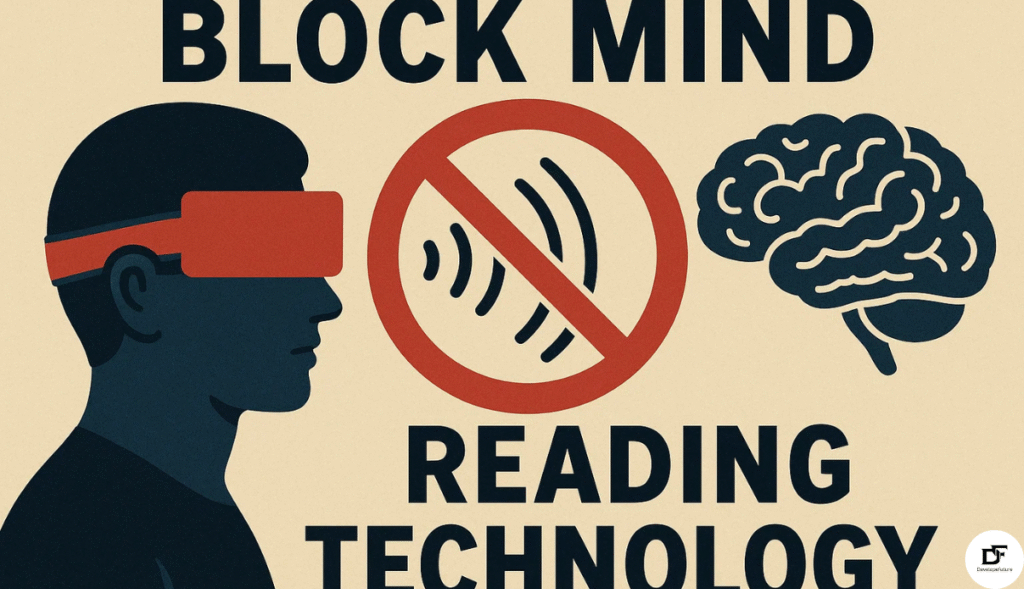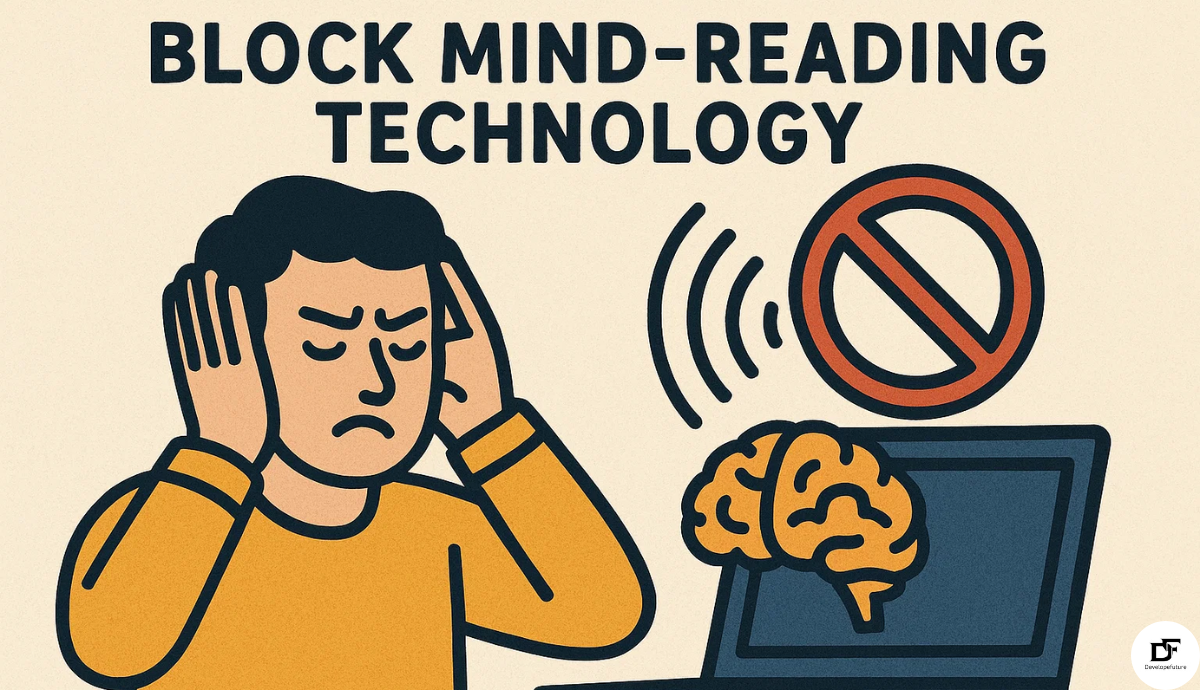The idea of mind-reading technology has fascinated. It’s frightened people for decades. It is from science fiction novels to futuristic movies. The concept of machines that can decode human thoughts has been a recurring theme. But in recent years, we have made advances in neuroscience. Artificial intelligence has moved this concept closer to reality. It is sparking both excitement and concern.
For some, mind-reading technology represents groundbreaking progress. It has the potential to help people with paralysis communicate. It assists in treating neurological disorders. It opens doors to new ways of human–machine interaction. It represents a dangerous invasion of privacy. It is raising questions about surveillance, consent, and human rights.
Here I’m going to explore what mind-reading technology really is. Whether it truly exists in the way people imagine. And how individuals can protect themselves. We will examine both the scientific reality and the myths surrounding it. Also, I explore its ethical concerns. And finally discuss strategies—scientific, practical, and psychological. That can help in “blocking” or guarding against unwanted intrusion.
Table of Contents
What Is Mind-Reading Technology?
Mind-reading technology is often misunderstood. In scientific terms, it refers to tools and systems designed to decode brain activity. And translate it into meaningful information. These technologies rely on neuroscience and brain-computer interfaces (BCIs). And also include advanced artificial intelligence algorithms.
One of the most widely used methods is functional Magnetic Resonance Imaging (fMRI). This detects changes in blood flow in the brain. It attempts to match these patterns with specific thoughts or images. Another is Electroencephalography (EEG). Which records electrical activity in the brain through electrodes placed on the scalp. Scientists use these tools to make rough predictions about what a person is thinking. Though the results are still limited.
At present, “mind reading” is not like the dramatic portrayals in movies. In a movie, someone can instantly access another person’s thoughts. Instead, it is more about decoding patterns, words. It images that the brain produces in controlled laboratory settings.

Is Mind-Reading Technology Real or a Myth?
To answer this question, we must separate fact from fiction. Scientifically, technologies that can “interpret” certain brain signals do exist. But their capabilities are far from perfect. Researchers have been able to reconstruct basic images people are looking at. It predict choices a few seconds before they are consciously made. And even assist in translating imagined speech into text.
It is important to note that these achievements must controlled conditions, specialized equipment. It direct cooperation from the subject. Remote “thought scanning” without consent, as often feared, is not currently possible. The brain’s signals are extremely weak. They cannot be read accurately. From a distance without electrodes or advanced imaging devices.
The myth of widespread, remote mind-reading surveillance persists. Because of exaggerated claims and conspiracy theories. And the blending of science fiction with real research. While people should remain aware of advancements. They should also understand the limits of current technology.
Possible Risks and Ethical Concerns
Even if mind-reading technology is not fully developed, the potential risks are serious. The biggest concern is privacy. If thoughts could be decoded, even partially, without a person’s consent. It would represent the ultimate invasion of privacy. Far beyond anything digital surveillance has achieved.
Another concern is misuse. Governments, corporations, or even malicious individuals could attempt. To exploit this technology for control, marketing, or manipulation. Imagine a future where companies can read your preferences directly. From your brain or where authorities can check dissent by analyzing thought patterns.
There are also ethical questions about human rights. The idea of “cognitive liberty”—the right to keep one’s thoughts private. Now is being discussed by philosophers and ethicists. As neurotechnology advances, new laws and regulations. It will be necessary to protect people from exploitation.

How to Block or Protect Yourself from Mind-Reading Technology
This is the section most readers are curious about. While current technologies do not allow for full remote mind reading. There are both scientific measures and psychological strategies. That individuals can use to protect themselves.
1. Understanding the Scientific Reality
It’s important to know that mind-reading devices cannot function. Those work with the presence of direct contact or specialized equipment. For example, EEG requires electrodes on the scalp, and fMRI requires a large machine. So, the idea of satellites or hidden devices reading thoughts. from a distance is not supported by current science.

2. Physical Protection Methods
Some people explore ways to shield themselves from potential brainwave interference. Materials like Faraday cages. Metallic enclosures that block electromagnetic signals. It can prevent the detection of brain activity by external devices. Similarly, EMF-blocking fabrics are marketed. As protective clothing against electromagnetic fields. Although their effectiveness against brain scanning is debatable.
3. Limiting Exposure to False Claims
A large part of “protection” comes from not falling for misinformation. Many devices or services claim to block mind-reading technology. But most are scams exploiting people’s fears. Staying informed through scientific sources. That is one of the best ways to protect oneself.

4. Psychological Defense Strategies
For those experiencing anxiety about mind reading, psychological resilience is key. Techniques like mindfulness meditation and deep breathing exercises. Also stress management can reduce the feeling of vulnerability. Sometimes, the fear of being monitored is itself more damaging than the technology. In such cases, therapy or counseling may help address paranoia or anxiety.
The Psychological Angle
The fear of mind-reading technology is often deeply connected to mental health. Many individuals who believe they are being monitored. Their report symptoms of paranoia, anxiety, or stress. While their concerns deserve compassion. It is important to differentiate between actual technological risks and psychological perceptions.
Psychologists suggest that grounding techniques. Like focusing on present reality. Fact-checking fears, and limiting exposure to conspiracy-driven content—can help reduce distress. Recognizing that science does not currently allow for secret remote mind reading. It can bring relief to many.
At the same time, mental health professionals advocate for public education on neurotechnology. By spreading accurate information. Societies can prevent unnecessary fear. It reduce the stigma attached to discussing such concerns.
Future of Neurotechnology
Looking ahead, neurotechnology is expected to grow rapidly. Companies like Neuralink are already experimenting with brain implants. That allow direct communication between the brain and machines. These devices have the potential to restore lost abilities. For people with paralysis or neurological disorders. But they also raise questions about security and privacy.
In the future, it may indeed become possible to decode thoughts with greater accuracy. This is why experts emphasize the need for strict regulations and ethical frameworks. Also technological safeguards before such devices become mainstream. If used responsibly, mind-reading technologies could be revolutionary. If misused, they could threaten fundamental human freedoms.
FAQ’s
Can someone really read my thoughts remotely?
No. Current science does not allow for remote mind-reading technologies like EEG and fMRI require direct contact or specialized machines.
What materials can block brain signals?
Faraday cages and certain metallic shields can block electromagnetic signals. However, since no remote mind-reading technology exists today, its necessity is limited.
Is EMF protection clothing useful against mind-reading?
Such clothing can reduce exposure to electromagnetic fields. But there is no evidence that it protects against brain scanning.
What role does mental health play in fears about mind-reading?
Anxiety and paranoia can amplify fears of being monitored. Therapy, mindfulness, and education help individuals cope with these feelings.
Will future technology allow full mind-reading?
It is possible that future neurotechnology will decode thoughts more accurately. This is why discussions about ethics, privacy, and regulation are crucial today.
Conclusion
Mind-reading technology is both a promise and a threat. While science has made progress in decoding brain signals. It is still far from achieving full remote thought reading. Much of what people fear remains. The realm of science fiction or exaggerated speculation.
Protecting oneself involves understanding the reality of current technology. It is using physical shielding where appropriate, avoiding misinformation, and building psychological resilience. Above all, society must prepare for the ethical and legal challenges. The future neurotechnology will bring.
The human mind is our most private space. As technology advances, the responsibility to safeguard thought. Our privacy will become one of the most important challenges of the 21st century.

